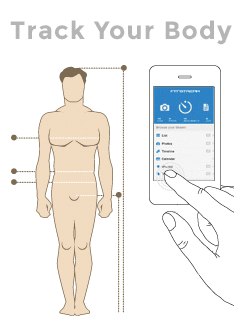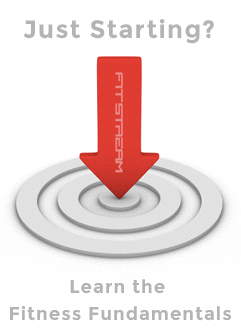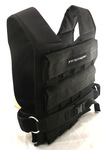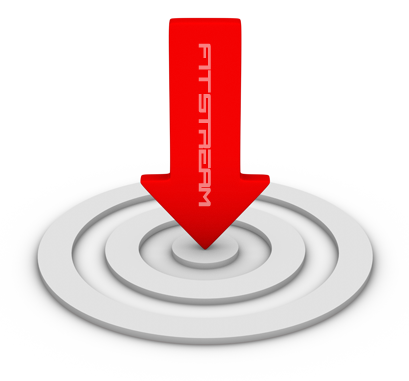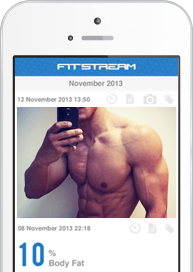We’ve produced this simple, fact-based guide to general health and fitness for beginners. It will give you the easy-to-understand information that you’re looking for to get you started on your path to building a better body and enjoying improved health.
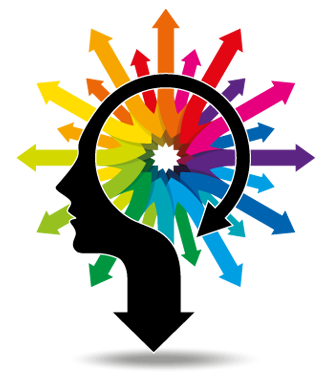 Your approach
Your approach
The fundamental component that you must get right is your mindset and approach to fitness.
Most people see health and fitness as a short term lifestyle change. This is the corrective action approach to health. They get out of shape, put on a few pounds and the answer is a painful few weeks of the latest ‘insanity’ workout combined with a miserable [insert latest buzzword] Juice Diet, until they’ve hit their goals.
This isn’t sustainable and it doesn’t work. It usually ends in that person reverting back to their original lifestyle and repeating the whole process again.
If you’re committed to good health and fitness, that is, to want to have more energy, live longer, be stronger and look better, your approach must be that of long-term lifestyle changes and finding a healthy, balanced way to live your life.
The next fact that you must acknowledge is that whatever your goal, the changes aren’t going to happen overnight. It’s going to take persistence and commitment. Your current state has taken years of accumulated lifestyle choices and it will take slow, but steady progress to fix. Anyone promising otherwise is usually peddling something ineffective that will require your wallet.
To set expectations, you can lose around 1-2 lbs of fat per week and build 0.5 lbs (3) of muscle (although women usually can’t build muscle as quick due to hormonal differences). In a year, that could be over 100 lbs of fat loss or 26 lbs of muscle!
OK, now that we all know what to expect, we’ll get started on how to start making changes. It begins by understanding what you’re aiming for.
Understanding your goals
It’s important that you define what you want to achieve, so you can start following the optimal lifestyle to hit those goals.
Most beginners have the same goals -
- Lose fat,
- Build muscle
- Tone up
In fact, “toning up” is really just a combination of losing fat and building muscle. It’s worth noting at this point that fat does not turn into muscle, fat is lost, muscle is built and they’re two different things. So, for anyone wanting to tone up, you really have two goals: to lose a small amount of fat and gain a small amount of muscle.
The method of building muscle and burning fat comes down to two things; diet and exercise.
We will start with how to fix your diet, because what you eat is fundamental in changing the way you look. In fact, diet is the most important single factor in determining your health, body composition and overall appearance. Diet enables you to change your body weight by building muscle or burning fat, whereas exercise is a tool to further control the changes, to prompt the need for more muscle, or accelerate fat loss. Diet really is that important, and should be your first priority as a beginner.
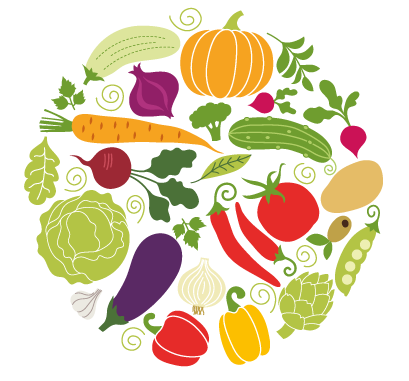 Fixing your diet
Fixing your diet
Fixing your diet is about two things; taking in enough vitamins, minerals and proteins to support good health, while limiting your calorie intake in line with your goals.
You should start by understanding your current diet. The best way of doing this is by tracking your eating habits, either manually, using pen and paper or using a calorie tracking application, such as myfitnesspal or loseit.
What should you eat?
Cut out the processed food and eat whole, natural foods. This will keep you more full than the processed stuff (1)(4) and for far fewer calories (2).
As a general rule, avoid food that contains more than five ingredients or where these ingredients are unfamiliar to you or unpronounceable.
Stop drinking juices and soda and start drinking water instead. Liquid calories can quickly raise your daily intake, are easily processed by the body and often full of simple sugars (pop, alcoholic drinks, juice, and coffees can contain several hundred calories in one glass!).
You’re likely to have cravings as you adapt to your new diet but they pass with time. The key thing is to remember is that you must eat healthy most of the time, with only occasional treats.
How much you should you be eating?
Your body obeys the same laws as physics as everyone else’s;
- Consume more calories than you use and you’ll get bigger
- Consume fewer calories than you use and you’ll get smaller
- Eat your maintenance level of calories and you’ll stay the same.
You could lift heavy weights each and every day, but if you don’t eat more calories than you use then you won’t build muscle. Conversely, you could run a marathon every day of your life but if you’re taking in more calories than you’re using you’ll only put on weight.
To work out how many calories you should be eating you need to calculate your Total Daily Energy Expenditure (TDEE) which represents the number of calories you need to consume each day just to maintain your present weight. You can then adjust this value based on whether you want to gain muscle, by eating more than your TDEE, or lose fat by eating less than your TDEE.
It’s best to stay within 500 calories above or below your TDEE so that you make steady, healthy progress. In terms of weight loss, this is equivalent to one pound lost per week.
You can calculate your TDEE manually (more time consuming, but accurate) or estimate it using an online TDEE tool.
To summarise the steps in fixing your diet;
- Track your calories to help understand and control your food consumption
- Calculate your Total Daily Energy Expenditure (TDEE) to understand your daily calorie requirements
- Adjust your TDEE based upon your goal to either build muscle or lose fat
Now that your diet is under control it’s time to start moving.
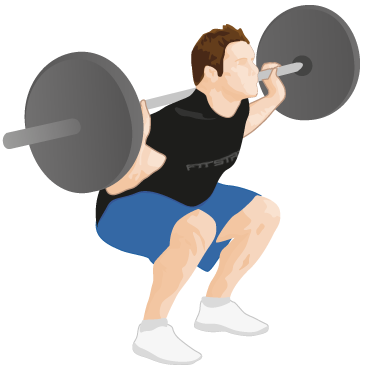 Increasing Activity and Exercise
Increasing Activity and Exercise
While it’s critical to get your diet right, it’s essential that this is paired with a good exercise regime. Exercising the body has many physical and mental benefits;
- Helps determine your body composition. Whilst you may diet down to a target weight, it’s exercise that will determine your composition at that weight (are you 150lbs of defined muscle, or shapeless and weak?)
- Builds a range of physical skills such as strength, cardiovascular endurance, stamina, flexibility, power, speed, agility, balance, coordination and accuracy, that improve the quality of your life and makes you more resistant to injury and illness
- Burns calories and helps with weight loss
- Promotes improvement in mood by increasing dopamine and serotonin levels (5) and can help with depression (7)
- Keeps the heart healthy (6) and strengthens the immune system
How should you be exercising?
There’s no single way of exercising that is best for everyone and with the exception of some fundamental guidelines it should vary from person-to-person based on your goals and what you enjoy doing.
Exercise is generally broken down into three categories;
- Weight training - using your muscles to move an external weight to build muscle and gain strength (also known as strength training, “weights”, weight lifting, resistance training)
- Aerobic conditioning - to train the cardiovascular system and improve health and endurance (Also known as cardiovascular, or cardio training)
- Activities and sports - for overall health and fitness. We’re including activities like football, biking, swimming, yoga, badminton, climbing, martial arts, walking, dancing.
For most people, meeting their fitness goals requires that they do elements of each.
As a beginner, you’re not in the position to write your own exercise routine. It’s best to choose a tried and tested plan created by a professional. Some popular exercise plans for beginners include;
- Popular aerobic conditioning
- Running: Couch-to-5k
- High Intensity Interval Training: Ultimate 8-Week HIIT
- Circuit Training: The Magic 50, No Excuses
- Swimming: Zero to 1 Mile
- Popular weight training programs
- Barbell programs: Starting Strength, Strong Lifts 5x5, Westside for Skinny Bastards, Greyskull LP
- Bodyweight training programs: Convict Conditioning, Overcoming Gravity, and You Are Your Own Gym
If you’re put off by any of these programs and just looking for a bare bones approach for beginners, we’ve put together this basic free weight workout intended for developing strength and building muscle - beginners weight training program.
Starting Aerobic training
Aerobic training is recommended as it improves muscular endurance and heart health.
Ensure that you always start with a warm-up by working at a low intensity for a few minutes before building to the full workout. This will prepare the body and reduce the risk of injury.
Popular choices of aerobic conditioning include jump rope, running, steps, treadmill, stationary bike and walking. If you have bad joints you might like to consider swimming or biking as these activities are low impact.
Starting weight training
While aerobic exercises are excellent for endurance and cardio health, they aren’t as effective as weight training and other anaerobic exercises for burning fat or building muscle.
When you’re looking for a suitable weight training program, you’ll find some similarities between most beginners methods that we outline below.
Most programs are based on compound movements, that is, exercises that involve the movement of two or more joints, such as squats (knees and hips). This is in contrast to isolation exercises, such as bicep curls, which involve only one joint (the elbow).
Compound exercises are very efficient for beginners because they recruit more muscle mass across all major muscle groups, with fewer exercises compared to isolation exercises. Some example compound exercises include barbell squat, deadlift, pull-ups, and dips.
Good beginner programs are also based on lifting heavy weights. This stimulates muscle growth as the body needs to be subjected to heavy loads to initiate this process. A good way of gauging if the weights are heavy enough is to aim for a weight that you can only lift 5-10 times before stopping.
Generally, the successful approach for beginners is to train 2-3 times per week, with sets of low repetition, compound movements, adding weight as you progress.
Weight training tips
- Warm up before weight lifting with a few minutes of light cardiovascular exercise
- Constantly challenge yourself but increase weight incrementally each week
- Always use good form and keep control of movements
- Pick a reputable program and give it time
- Track your progress. This is essential and will help keep you motivated and aware of how you’re developing
- A watch or timer can really help keep you focused on your workout
Rest and recovery
Now that your diet is in order and you’re getting the right level of exercise it’s time to cover the other major part of your life - getting the right amount of rest and recovery.
- You need at least 7 - 8 hours of sleep each night. Adequate sleep is essential for recovery from your training, muscle growth and general well being
- Don’t train the same muscle group on consecutive days, allowing around 48 hours of time for the muscles to repair themselves
- You can expect soreness after a workout, this is called Delayed Onset Muscle Soreness, or DOMS, but be very cautious if you’re experiencing pain in the middle of a workout, persistent pain or if it’s sharp and restricted to one area.
Recording your progress
The progress you make is a powerful motivator.
Make sure you track how far you’ve come using before and after photos and body measurements. Just recording your changes in body weight isn’t a great metric to track. Check out these articles to help explain why you should be tracking your fitness and how best to track your progress.
Next steps
Consistent training (3+ months) helps turn workouts into healthy habits and an everyday part of your routine. As you improve, working out feels less like a chore and more just like a part of life.
As a beginner, you can expect to make excellent progress but the key to success is consistency and mastering the fundamentals. There’s much more to learn, but a common mistake for beginners is to go into information overload, soaking up every last piece of information they can find and ultimately drowning in data and conflicting opinions.
Take a tried-and-tested method like we’ve outlined above and stick with the approach. Once you’ve made solid progress, continue your education and learn from reputable sources at a controlled pace that allows you to figure out the refinements that work for you.
The hardest part is getting started.
![]()
References
1. URL: http://www.ncbi.nlm.nih.gov/pubmed/11396693 Date: 03.Oct.2013
2. URL: http://www.ncbi.nlm.nih.gov/pubmed/20613890 Date: 10.Sep.2013
3. URL: http://www.bodyrecomposition.com/muscle-gain/whats-my-genetic-muscular-potential.html Date: 01.Sep.2013
4. URL: http://www.ncbi.nlm.nih.gov/pubmed/7498104 Date: 10.Sep.2013
5. URL: http://bjsm.bmj.com/content/early/2009/09/29/bjsm.2009.065557.abstract Date: 07.Sep.2013
6. URL: http://www.ncbi.nlm.nih.gov/pubmed/8248681 Date: 10.Sep.2013
7. URL: http://www.ncbi.nlm.nih.gov/pubmed/11273973 Date: 10.Sep.2013

